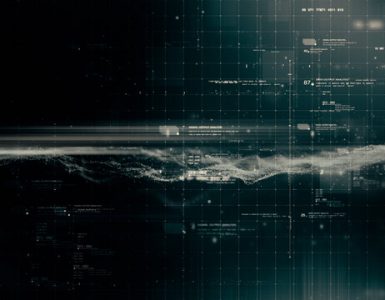There have been numerous comments and articles since Apple released iOS 7 with iBeacons. Based on the signal provided by Bluetooth (particularly, Bluetooth Low Energy, or BLE) by beacon devices, iBeacon technology is a ground-breaking approach to track the position of a device indoors and use location services, comparable to the GPS outdoors. As long as they are running the right application, iOS devices may likewise perform it.
In simpler words, It is a piece of technology that Apple created. It is useful to know where different devices are located. using the Bluetooth 4.0 standard.
The ability to create applications that can monitor for iBeacons and subsequently take various actions, always in accordance with specified requirements, is the most crucial aspect of the iOS SDK. iBeacons can be used in a variety of situations, particularly those involving marketing. Targeted adverts, for instance, can be presented on consumers’ smartphones through the use of iBeacons in retail establishments as the device enters the region of the beacon, or the traffic in such establishments can be monitored.
For instance,
Consider the following scenario to get a better understanding of the significance and utility of iBeacons. You are at a sizable shopping center with many merchants offering various goods. Although traditional location-based services applications can pinpoint your location, they aren’t really helpful when you’re inside because you never truly know where you are in a mall. Even if a Nike store is close by, you might not be aware of a current special. Now imagine that Nike has installed a beacon in its store and that you are using the mall’s mobile app. The mobile app searches for Nike’s beacon automatically. The software recognises your location as being close to the Nike shop as soon as the beacon is detected (in iBeacon-speak, we say that we have now entered the region). In order to get information about promotions based on the location of the store, the app can now connect to its own Web services. It’s not hard to envision how handy the app would be if every store in the mall had its own beacon. The app can provide context-specific promotional information based on your location as you walk from one retailer to another.
iBeacon is also used for payments. The application already recognizes that you are in the Nike shop, so you could pay with your phone instantly when you’re ready to pay for your goods there.
Every iBeacon has an identity that is divided into three parts:
Proximity UUID: For simplicity in this writing, I’ll refer to this value as a UUID (Universally Unique Identifier), which is a 128-bit value. We’ll go into more specifics about this later, including how a UUID is made. For the time being, all that has to be said is that this value sets one iBeacon from another.
Major: To set one iBeacon apart from others with the same UUID, it contains two values. This initial value, usually referred to as the most important value, nearly invariably designates a sub-region inside an area of beacons with the same UUID. Imagine, for instance, that a person wanted to employ iBeacons in his home and placed one in each of the living room, kitchen, and bedroom. Then, for each iBeacon to accurately represent each sub-region of the house, it must have a different major value and the same UUID to belong to the same region (let’s call it the house region).The primary value may refer to something other than a sub-region only in exceptional circumstances and under specified, app-specific restrictions.
Minor: This value, which I described previously as the second one, is also known as the least important value. It is used to further segment a sub-region defined by the primary value, always in accordance with the needs of the app that is being developed. In the hypothetical case I just described, the minor value could define a specific location within a room, such as the area next to a window or a closet.
In simple words,
– UUID is a set of numbers that are created for Beacon
– Major is a set of numbers indicating that beacon is in which group can be referenced from the same UUID
– Minor is a set of numbers indicating that a beacon is in which sub-group that divided from major.
Conclusion :
Working with beacons in a real application is, in my opinion, a little trickier because the code needs to be adjusted to the logic of the still-under-development application, but everything is still doable.
A beacon receiver will almost certainly need to be made at some point, even if you just occasionally or never need to construct an iBeacon app for testing or demonstration purposes.
References :
https://www.hackingwithswift.com/example-code/location/how-to-make-an-iphone-transmit-an-ibeacon
https://www.codemag.com/article/1405051/Understanding-and-Using-iBeacons
If you are looking for challenging opportunities at some of the fastest-growing global companies, join Talent500. Sign up here.






Add comment